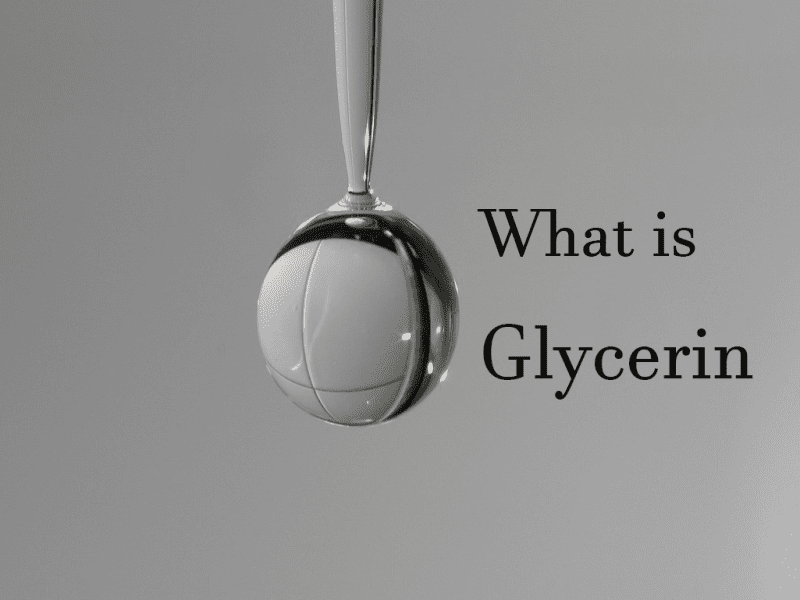
Check the ingredient list of your moisturizer, the label on your favorite baked goods, or the coolant in your car—you will likely find a common component: glycerin. This colorless, odorless liquid with a subtle sweetness plays a vital but often overlooked role in countless daily products. Chemically known as glycerol, this simple triol compound (C₃H₈O₃) contains three hydroxyl groups, which give it exceptional versatility—supporting functions from skin hydration to explosive stabilization. Below is an exploration of the science and applications of this notable substance.
What Makes Glycerin Unique?
Glycerin’s functional properties stem from its molecular structure. Those three hydroxyl groups enable hydrogen bonding with water molecules. This hygroscopic characteristic classifies glycerin as a natural humectant: it draws moisture from the air and deeper skin layers to hydrate the stratum corneum, the outermost layer of skin. Unlike some synthetic moisturizers, glycerin works in alignment with the skin’s natural barrier, enhancing the function of aquaporins—proteins that transport water to areas of greatest need. This two-part mechanism explains why glycerin is a standard ingredient in skincare products designed to relieve dryness and soothe conditions like eczema.
Glycerin also functions effectively as an emollient, softening rough skin patches by retaining moisture once absorbed. When combined with occlusives such as ceramides or oils, it forms a protective layer that extends hydration for hours. These properties are not purely cosmetic; they support skin health by strengthening the barrier against environmental stressors like pollution and extreme weather.
How Glycerin Is Made
Glycerin occurs naturally in plant oils and animal fats, where it serves as the backbone of triglycerides. For centuries, it was a byproduct of soapmaking: during saponification (the reaction between fats and alkali), glycerin separates as a sweet-tasting liquid—historically referred to as “sweet water” by soapmakers. Today, approximately 58% of natural glycerin comes from fatty acid production, while 42% still originates from soap manufacturing wastewater (which contains 9–16% glycerin). Modern extraction methods use high-pressure hydrolysis to isolate glycerin from oils like palm or soy, resulting in purer concentrations with minimal impurities.
Synthetic glycerin, derived from propylene (a petroleum byproduct), makes up a significant portion of global supply. The most common production process involves chlorinating propylene to form intermediate compounds, which then undergo hydrolysis to produce glycerin. This method yields ultra-pure glycerin (over 98% purity), suitable for pharmaceutical and industrial uses. Notably, biodiesel production now generates large volumes of crude glycerin as a waste product, spurring innovations in sustainable purification techniques to repurpose this material.
Glycerin’s Key Applications


Skincare and Personal Care
Glycerin’s ability to regulate hydration makes it widespread in moisturizers, serums, and cleansers. It plumps skin by attracting water, temporarily reducing the appearance of fine lines, and supports cell regeneration to accelerate wound healing. Its anti-inflammatory properties calm sensitive skin, making it a safe choice for acne-prone or irritated complexions. Hair products also use glycerin to address dryness without adding excess weight to hair strands.
Food and Pharmaceuticals
In food production, glycerin acts as a humectant in baked goods, extending the moisture retention of bread and cakes. Its mild sweetness (about 60% the intensity of sugar) enhances flavors in candies and beverages without causing sharp spikes in blood sugar, making it compatible with low-glycemic-index diets. The FDA classifies glycerin as safe for consumption in moderate amounts—typically up to 15 grams per kilogram of body weight daily.
In pharmaceuticals, glycerin serves as a solvent in cough syrups and a lubricant in suppositories. Its osmotic properties make it effective as a laxative, drawing water into the intestines to relieve constipation. It also acts as a preservative for medications and aids in forming soft gel capsules, ensuring ingredient stability.
Industrial Applications
Glycerin’s industrial uses are equally significant. When treated with nitric and sulfuric acids, it undergoes nitration to form nitroglycerin—a critical component in dynamite and industrial explosives used for mining and construction. This reaction requires precise temperature control (0–10°C) to prevent dangerous overheating, demonstrating glycerin’s ability to support both gentle and high-intensity applications.
In automotive and laboratory settings, glycerin functions as a non-toxic antifreeze. A 70% glycerin-water mixture freezes at -38°C, protecting engines and laboratory reagents from cold damage. Unlike ethylene glycol (a common toxic antifreeze), glycerin poses no harm to pets or wildlife if leaked, aligning with eco-friendly practices.
Safety First: Using Glycerin Wisely
Glycerin is generally safe, but moderation is important. Topical use rarely causes issues, though some individuals may experience mild irritation or redness—especially with high-concentration products. Oral overconsumption can lead to gastrointestinal discomfort (including bloating or diarrhea), particularly in people with sensitive digestive systems. Those with diabetes or kidney disease should consult healthcare providers before using glycerin supplements, as large doses may disrupt fluid balance.
When selecting glycerin products, choose food-grade or pharmaceutical-grade variants for internal use. For skincare, opt for formulations that pair glycerin with complementary ingredients like hyaluronic acid to maximize benefits while minimizing irritation.
The Versatile Compound with Broad Utility
Glycerin’s evolution from historical soapmaking byproduct to modern laboratory staple illustrates chemical versatility. Its capacity to hydrate, stabilize, and transform makes it indispensable across industries, yet it remains largely unrecognized by consumers. Whether supporting skin health, extending food freshness, or enabling industrial processes, glycerin demonstrates that many highly useful substances are often underappreciated. Next time you encounter glycerin on a product label, you will recognize its value: this simple molecule offers exceptional versatility across applications.
